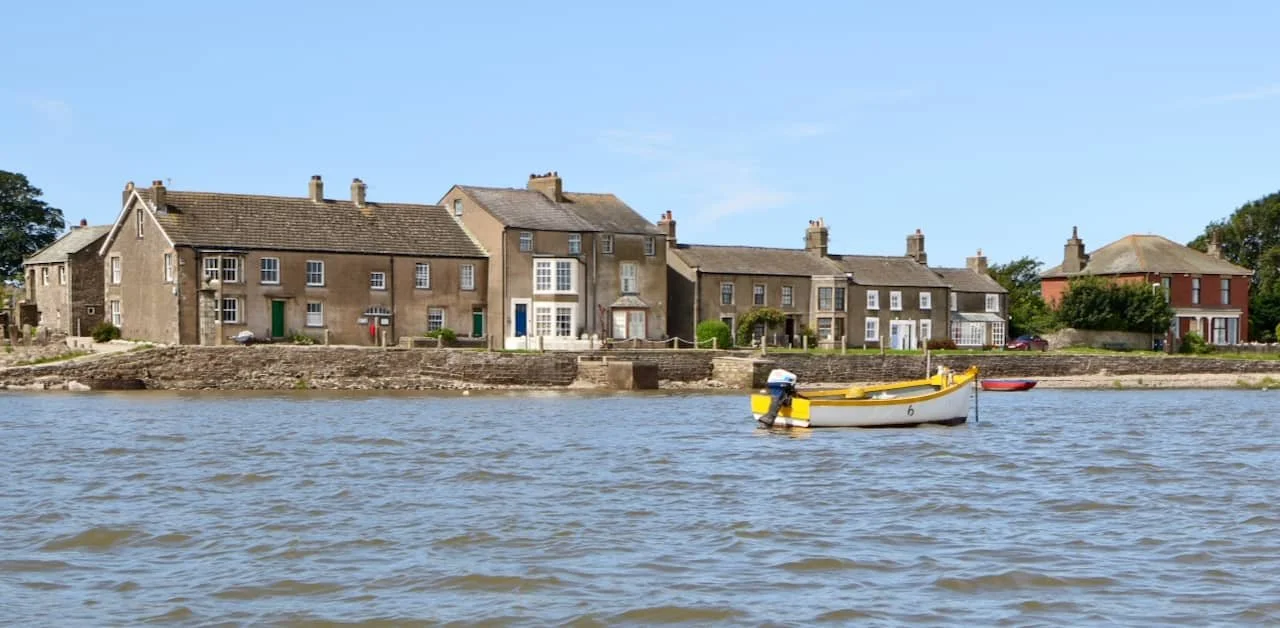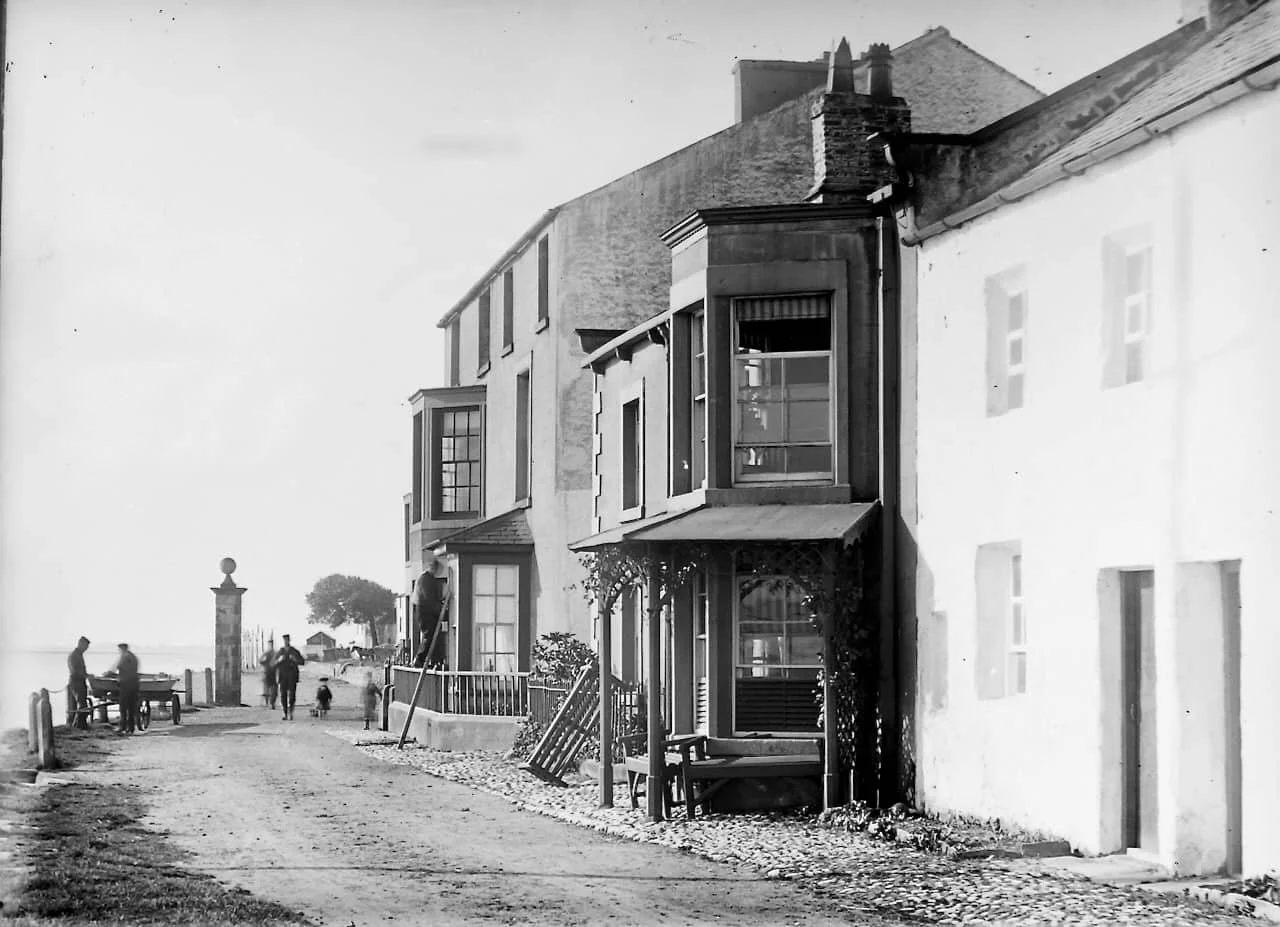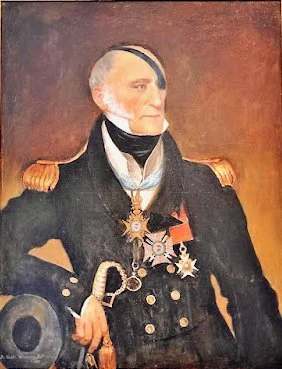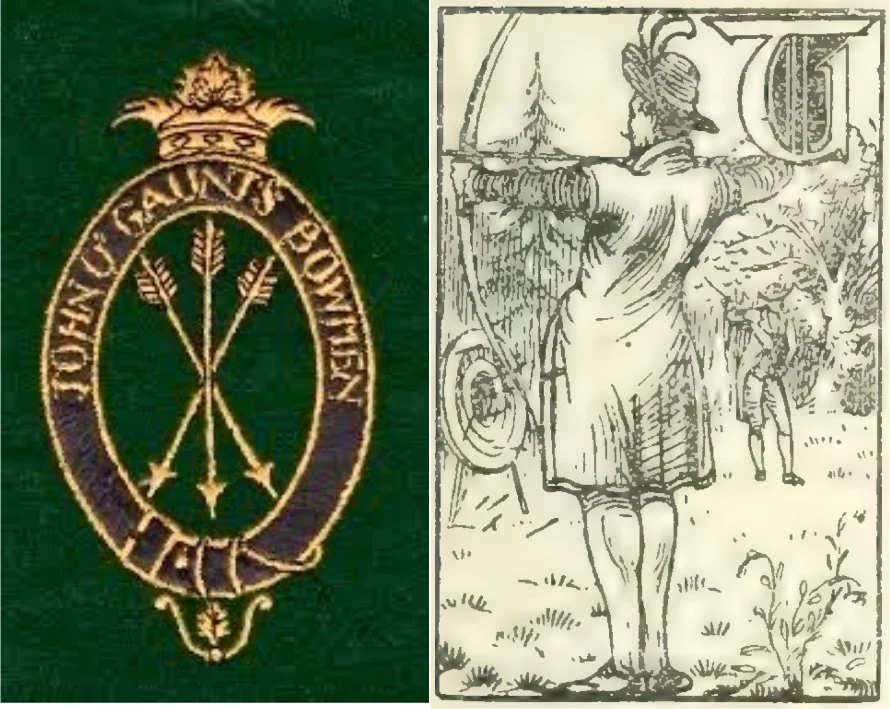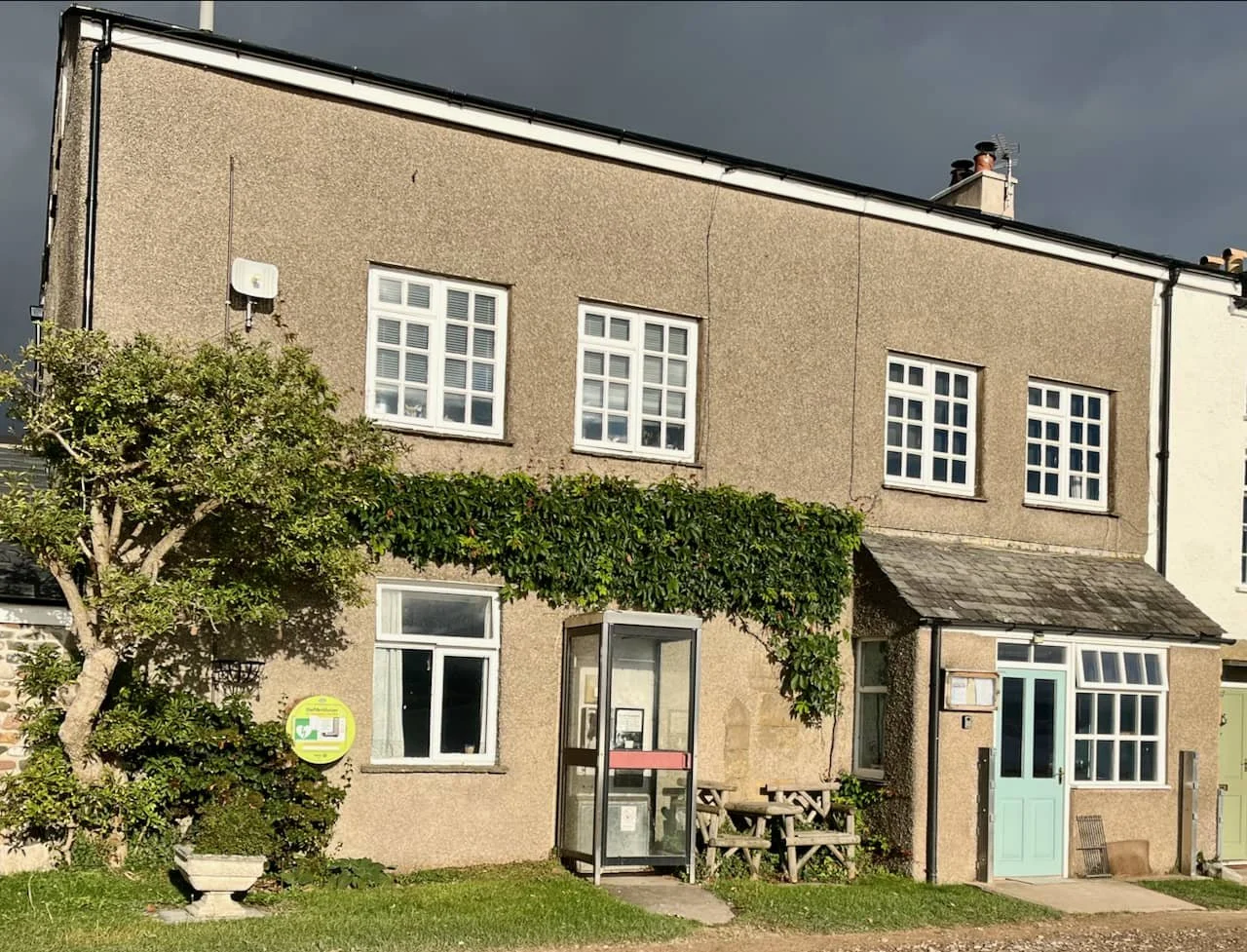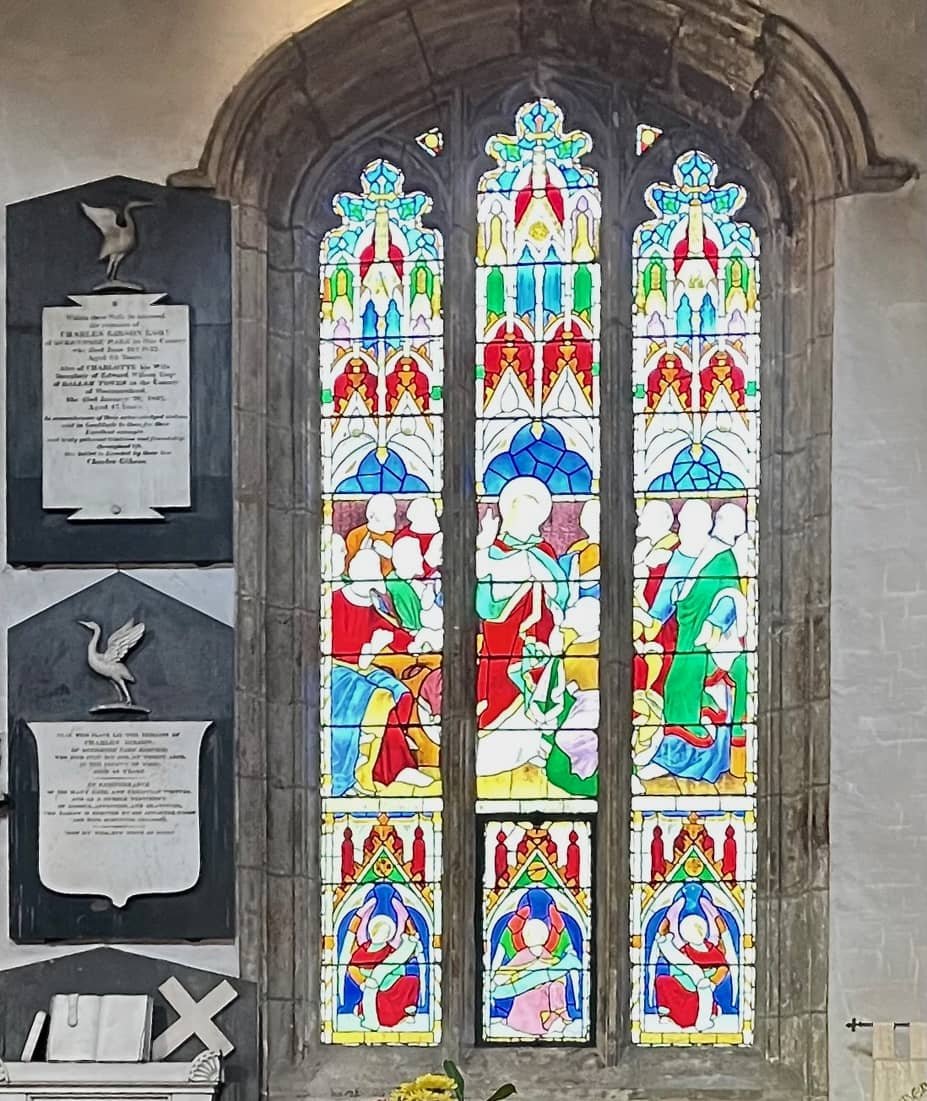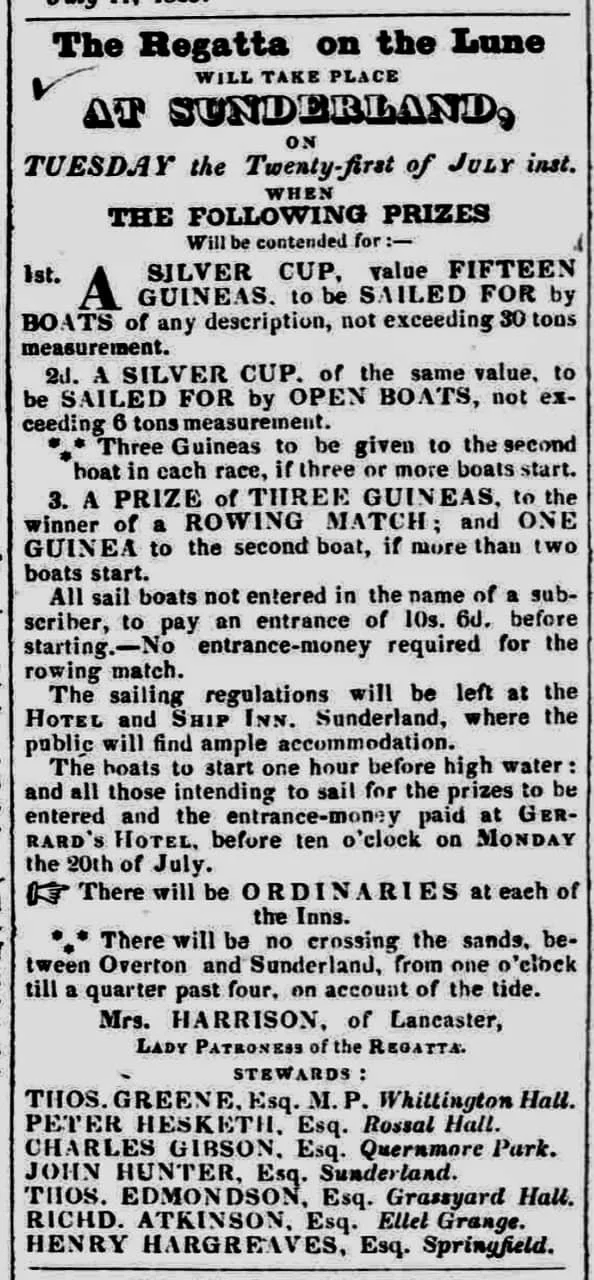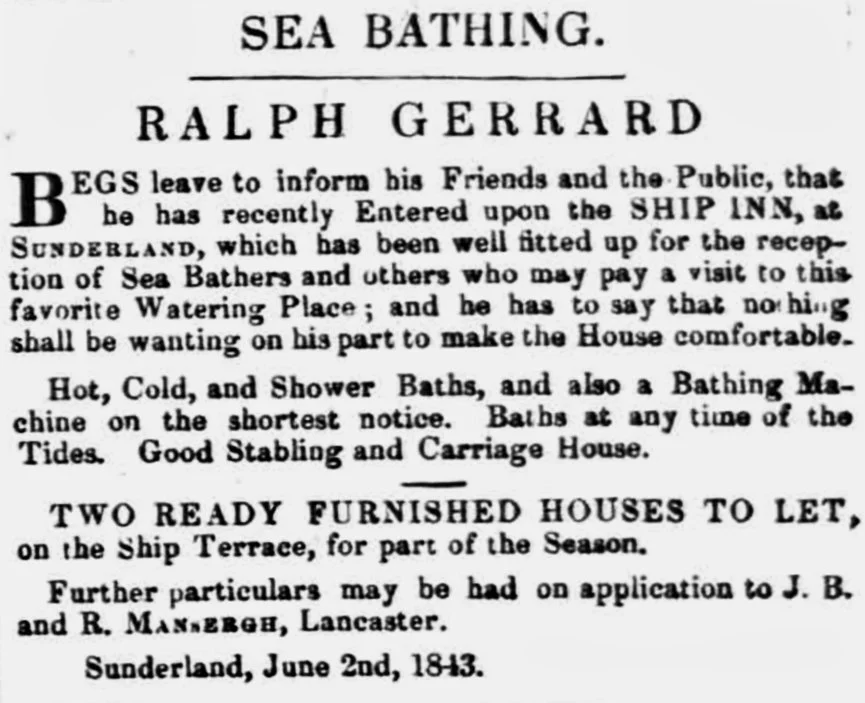Little Brighton by the Sea
That Delightful Watering Place
Second Part
First Terrace from the river: Photo Alan Smith
In part one, we covered the origins and development in the early 1800s of Sunderland Point as a seawater spa, its growing popularity among wealthy and influential people, and the presence of Mrs Francis Willoughby.
It is hard to believe the village was that famous two hundred years ago.
In part two, we begin with edited newspaper extracts that offer vivid evidence of the Point's significance. (Bold type used for emphasis)
Some remarkable events!
The King’s Birthday Celebration
Lancaster Gazette, June 8th, 1818.
‘On Thursday last being the anniversary of his Majesty's birthday when he entered into his 81st year was celebrated in this town with the usual demonstrations of joy.
At no place in the Kingdom was the day spent with more loyalty and harmony than in the pleasant little village of Sunderland. Two large parties from this town spent the day there:-
One of them (consisting of many gentlemen) sat down to an excellent repast at Hall End, T. W. Salisbury, Esq. presided; and when the cloth was drawn, our good old King's health was drunk the song and the toast went merrily round, and the greatest harmony and conviviality prevailed; nor were the poor of the village forgotten, plenty of cold ham, tongue, lamb, veal pies with bread and cheese &c being distributed among them.
Two field-pieces, placed on the rampart, opposite the residence of Richard Willock, Esquire. [Of this town] who entertained the other party on the occasion, were fired at different times, and told to the surrounding country that loyalty and hilarity prevailed at Little Brighton-upon-Lune for so long has that salubrious village being frequently called.’
We think this was number 7, and the guns on the ‘ramparts’ mentioned must be on the wharf of First Terrace.
Imagine! Guns blazing on First Terrace in 1818: Photo c 1900 by John Walker: Courtesy of Lancaster City Museums.
The host, Richard Willock, was a brewer of ales and a merchant in porters. During the 1818 General Election, as one of the two bailiffs, he oversaw the election. To maintain fairness, he was bribed equally by all candidates.
Captain Nesbit and the frigate Tribune
Lancaster Gazette August 23rd, 1819
‘At that delightful watering place, Sunderland Point, we were most agreeably surprised on Monday last by a visit from the officers of the Tribune frigate.
On Tuesday her pinnace and barge, with a most excellent band came up that river; and having taken in a party of ladies at Sunderland proceeded with the spring tide to Lancaster. The magnificence of the river, full to its brim, the fineness of the day, the beauty of the surrounding scenery, the gay prospect of the boats and the enlivening melody of the band formed one of the most enchanting scenes ever witnessed on our river.
The whole party fell down with the tide to Sunderland Point where both officers and men were most hospitably entertained by Mrs Willoughby of that place. – They returned onboard at an early hour, strongly impressed with the good cheer and hearty welcome which British seamen never fail to receive from those who know how to appreciate their excellence and worth.’
Nesbitt Willoughby was the famous nephew of Mrs Francis Willoughby. After Nelson, he was one of the best-known officers in the British Navy. In the absence of modern-day war heroes, think of David Beckham visiting the Point!
Captain, later Rear Admiral Sir Nesbit Willoughby: Internet source
He narrowly escaped being killed and was commonly known as "the man with the most wounds in the Navy."
"He was eleven times wounded with balls, three times with splinters, and cut in every part of his body with sabres and tomahawks: his face was disfigured by explosions of gunpowder, and he lost an eye and had part of his neck and jaw shot away.”
Nesbitt served in the East Indies and fought in the Battle of Copenhagen in 1801. After a brief dismissal following a court-martial for quarrelling with his captain, he rejoined active duty during the Napoleonic Wars, serving in the West Indies, the Sea of Marmara, and Mauritius. He was severely wounded during the naval battle off Mauritius in 1810 and was pensioned off, but believing he was still capable of further service, he volunteered with the Russian army in 1812. He was captured by the French and spent nine months imprisoned in France before managing to escape.
Willoughby commanded the Tribune from 1818 to 1822 before retiring from the Navy. He was knighted in 1827 and appointed as a naval aide-de-camp to the Queen in 1841. Sir Nesbitt was promoted to Rear-Admiral of the Blue in 1847 and of the White in 1849.
The John O’Gaunt Bowmen – a shoot for the Silver Arrow.
It’s difficult to overstate the social importance of Sunderland Point, selected as the venue for this event. The Bowmen were a society where membership was limited to the most influential families of Lancaster.
By the 1850s, the society was attracting crowds of over 3000 to their events in Lancaster.
Lancaster Gazette August 1820
‘This society of archers met to shoot for a silver arrow, presented by their Patroness, Mrs Harrison. The day was remarkably fine. The archers, in appropriate dresses, accompanied by their friends and a considerable number of ladies, with the band of the First Royal Lancashire Militia, proceeded in boats down the river from the Quay.
The sight was truly beautiful. The archers paid their respects to their Patron, Charles Gibson Esq. on his entering the field, where were pitched three tents, for the accommodation of the Ladies. The bugles sounded, and the archers, having arranged themselves, shot by pairs.
he wind carried off the lighter arrows, but the contest was good, and terminated in favour of Mr Andrade, by one shot only. The company afterwards repaired to Mrs Willoughby’shouse (which was kindly lent by that Lady). After many constitutional and appropriate toasts had been drunk, the company adjourned to the Ball-room, and dancing was kept up till the lateness of the evening.’
Societies of Bowmen were common in larger towns and cities. They emerged in response to fears of invasion from France (think a superior Dad’s Army). It revived the patriotic duty of practising archery when the longbow was the most feared weapon in warfare.
There was also a nod to a romantic image of Robin Hood.
First established in Lancaster in 1788 with a membership limited to 21, members were expected to follow certain social customs, such as presenting a “bishop” (a gift) upon election, and providing at least twelve bottles of wine upon marriage. Indeed, these traditions were often exceeded on a lavish scale.
The mention of ‘considerable numbers of ladies’ confirms the social importance and the display of costume and of ‘manliness’.
That the ‘wind carried off the lighter arrows’ refers diplomatically to those archers who failed to hit the targets.
Mrs Willoughby’s influence is evident in her house being used for ‘constitutional toasts’ and the Ball.
This event marked a revival of the society and an opportunity to introduce new costumes. There were two uniforms: ‘Full Dress’, a black coat with a white silk lining, a crimson military sash, and black stock or neckcloth; and a ‘Shooting Dress’, a Kendal green frock coat with gilt buttons depicting three crossed arrows, white drill trousers, a green forage cap with black and green feathers, and a black neck cloth or stock.
The first prize of the silver arrow, presented by Mrs Harrison, remained with the society (which still exists today) until it disappeared in 1970.
The original insignia of the John O’Gaunt Bowmen and a ‘romantic’ image of a bowman.
Mrs Strethill Harrison served as the lady patroness at the shoot, and she held the same role at the regatta (below)—a remarkable woman with considerable social influence in Lancaster during this period. Born Henrietta Saul, she inherited a fortune from her father, a Lancaster merchant. She first married the Rev. John Alexander Hunter in 1796, who died young in Bath. After returning to Lancaster, she married the aspiring lawyer Strethill Harrison.
They lived in considerable style in a large house on the High Street. She raised funds for many worthy causes, including those for the poor, schools, and the theatre.
Courtesy Guardian Newspapers
It seems likely that Mrs Harrison took the lease of the Big House after Mrs Willoughby died in 1821, before passing it on to her son, John Alexander Hunter.
The Big House today, August 2025: Website photo
Her daughter Jane Hunter became the wife of Charles Gibson, the younger, one of Lancaster’s wealthiest landowners and a man of civic influence. When Mrs Harrison died in 1849, in tribute to her life and charity, a memorial window was installed in St. Mary’s Priory Church.
Mrs Henretta Harrison’s obituary window in St Mary’s, Lancaster: Photo Website.
The 1839 Regatta
A much-enjoyed feature of Lancaster’s social calendar was the annual Sunderland Point regatta. We can imagine the noisy and colourful crowd arriving by coach or boat to enjoy a day out at the Point. Tents would have been pitched on the land between the Terraces, with refreshments—liquid and otherwise—provided by the Hotel and Ship Inn. And the band would have started to play. A fanfare to open proceedings:
As the Lancaster Gazette described in July 1829.
‘The Lady Patroness, Mrs Harrison, who appeared in excellent health and spirits, with her amiable daughter, Mrs Gibson and numerous party (members), after partaking at her residence of an elegant dejeune (lunch) preceded by a band of music, went in procession to a tent pitched expressly for their reception, and where the cups were exhibited, everything was admirably arranged, and every face beamed with pleasure.’
Courtesy Guardian newspapers
(The service of ‘Ordinaries’ at the Hotel and the Ship refers to a simple plate of food without options.)
The prizes of the silver cups, worth fifteen guineas, are impressive (valued today at about £5,000), but not extraordinary. The competition drew contestants due to its social significance, and the presence of a Lady Patroness shows that women were welcome. The stewards were notable local figures, including a Lancaster MP.
One of the stewards is Peter Hesketh of Rossall Hall. He served as High Sheriff of Lancashire in 1830 and MP for Preston for 15 years. Later knighted, he was a visionary Victorian landowner and entrepreneur. He essentially created Fleetwood as a working-class resort and maritime port. In 2018, a statue of him was unveiled in Fleetwood.
Statue of Sir Peter Hesketh-Fleetwood holding his model of the lower lighthouse. Courrtesy Fleetwood Councli
Later reported in the Gazette (and in Liverpool and London newspapers) was a near-drowning and the controversy that followed.
During the race, the yacht William sank in deep water, leaving the crew no choice but to swim to shore. The leading yacht, Red Rover, passed by without attempting a rescue; fortunately, the following boats, the Harriet and Ellen, stopped and picked up the survivors after:
‘a dangerous half-hour in the water…happily all picked up and alive; one of them, however, was nearly dead, but with care and attention he was brought abouts.’ (Liverpool Mercury July 31, 1819)
John Hunter, owner of the winning yacht Red Rover, may have watched in horror from the shore. In disgrace by the crew's failure to assist, Hunter offered to forgo the first prize of fifteen guineas.
A sign of decline
Next year, the 1830 Regatta was almost identical in format, perhaps a touch more splendid than 1839. Both Lancaster MPs attended, along with other notables. This time, the Lady Patroness was Mrs Hesketh of Rossall Hall.
Her brother Peter Hesketh, now High Sheriff of the County, was noticeably absent - but two days later, he served as a steward at the Regatta at Poulton (later to become Morecambe).
Courtesy Guardian newspapers
Competition for the leading seaside holiday resort from Poulton was intensifying. In 1832, a new coach named ‘The Royal Sailor’ began regular service between Poulton and Lancaster. By 1833, Poulton had established its dominance over the Point.
‘Although Sunderland continued to hold regattas. Those at Poulton received the most attention, and it was Poulton which was considered the local bathing place.’ (Lancaster Gazette)
The Gazette opined pompously, ‘We have little doubt that Poulton will soon become the first fashionable resort in this neighbourhood, and we cannot be astonished if it does, considering how easily it is accessible and the beautiful and picturesque view presented from its coast’
The long decline
The Point remained a popular destination for family summer holidays throughout the century, but with improved transport, particularly the railway, visitors began to travel further afield.
In 1842, another ‘regatta’ was reported, which seems worlds apart from the grand event of 1830. The Lancaster Gazette: ‘These sports commenced on Monday last, with a footrace round a field at the back of Kitchen’s Hotel.’
It continues: ‘The next part of the amusements was a sack race, in a field at the back of the Ship Inn. The novel mode in which they jumped along caused much merriment.
The article details events and the winners, but it does not mention boat races or notable attendees. But it’s good to see:
The Lancaster Friendly Band was in attendance, and the lively airs they played added great éclat to the proceedings.
By the 1850s, the fashionable regattas had moved to Poulton (Morecambe) and at Halton Water in Lancaster.
The Ship Inn
Poor James Birkett. He is facing a difficult time at the Ship Inn. He is no longer directly involved and now relies on tenant innkeepers.
The Lancaster Town and Herald in September 1831, reported on the granting of alcohol licences: ‘James Birkett of the Ship Inn, Sunderland (this house has not been opened for the last 2 years in consequence of the tenant having deserted it)’
James Birkett died in 1842, and his nephew, John B. Mansergh, inherited the Ship. Ralph Gerrard, a younger brother of John Gerrard (who had been at The Hotel), became the tenant at the Inn.
The two furnished houses to let are likely to be numbers eight and nine on First Terrace: Courtesy Guardian newspapers.
After an enthusiastic start, his interest waned, and within a few years, he left for Skerton in Lancaster.
The Hotel
By the mid-1830s, John Gerrard had left The Hotel; John Bagot is the new tenant, but he doesn’t last long. In 1839, it was advertised for a seven-year tenancy and was taken by John Kitchen, who advertised in June.
Lancaster Gazette 22nd June 1839
SUNDERLAND HOTEL - BATHING John Kitchen Begs to inform his Friends and the Public generally that he has recently entered upon the above well-accustomed Establishment, and made it convenient in every respect for the accommodation of Bathers and Visitors to this delightful Summer retreat. Sunderland, near Lancaster, 21st June, 1839
This is the final advertisement for The Hotel as a hotel. It was marketed for letting in 1849, and a possible sale in 1872. It continued to accept paying guests, but the attached farm became the primary concern.
End of an Era
In the 1860s, in a final humiliation, the alcohol licences were lost at The Hotel and the Ship Inn.
The census records from 1841 to 1881 show how the holiday cottages and summer residences are gradually giving way to occupation by local fishing families.
Poor Bath House
By the 1890s, William Hodgson, the tenant of The Hotel, who had tried and failed to have the alcohol license restored, was using the Bath House as a calf shed!
‘Hodgsons Calf Shed’, a George Gilchrist photograph: Courtesy of the Gilchrist family
Special thanks to Elizabeth Hampson, who uncovered the identity of Mrs Harrison.
Next time, Postcards of Sunderland Point, we should be ready to publish a gallery of the cards we have collected.
